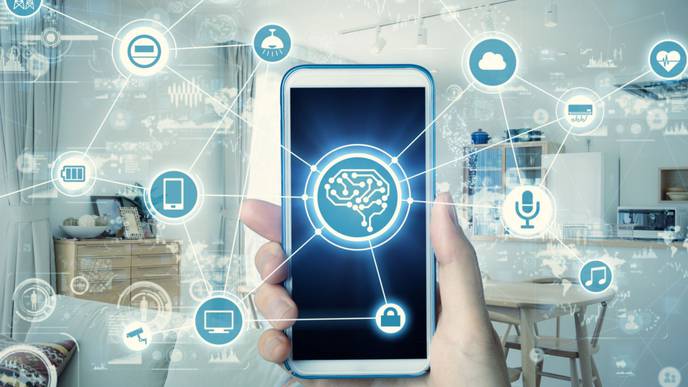ReachMD
Be part of the knowledge.™‘Smart Speaker’ Shows Potential for Better Self-Management of Type 2 Diabetes

Type 2 diabetes patients have access to an assortment of digital health tools, including mobile apps for iPhones and remote patient monitoring devices, all of which help them manage their blood glycemic levels. They can test at home, usually with a glucometer, then communicate that data to their care team via an app or web portal, by calling on the phone, or by waiting for an appointment.
But these monitoring tools assume a level of comfort with technology and sometimes math proficiency that many patients don’t have. And they all require something in short supply: clinicians.
Now, researchers from Stanford Medicine have created a voice-based artificial intelligence application that runs on a device already familiar to tens of millions of Americans: a “smart speaker,” commonly used to play music and check the weather. The app tells patients the correct insulin dose without requiring them to contact their doctor’s office or wait for an appointment.
“People simply don’t have that much access to care,” said Ashwin Nayak, MD, a clinical assistant professor of medicine. “We want to empower patients to do it themselves.” Nayak is first author of the paper based on the study, which was published last month in JAMA Network Open.
Participants in a randomized trial who used the system achieved optimal blood glucose levels far faster than the control group; they were also better about taking the prescribed amount of insulin at the time they were supposed to.
In addition, they reported lower levels of emotional distress related to their diabetes.
Most patients with Type 2 diabetes don’t benefit from the continuous glucose monitors or insulin pumps commonly used by patients with Type 1 diabetes. Insulin pumps supply a constant amount of insulin to address insulin deficiency, in which the cells that should be producing insulin fail to do so. Type 2 diabetics, in contrast, have insulin resistance, so their need for insulin tends to be less consistent.
Small study shows results
The study followed 32 individuals with Type 2 diabetes who were all taking insulin and struggling to achieve healthy blood glucose levels. Half of those received a speaker preloaded with the voice-based artificial intelligence software created by the research team. Each participant’s insulin protocol — including starting insulin dose, fasting blood glucose range goal and insulin dose instructions — was included in the software on their device.
Participants assigned to the AI group were instructed to check in each day using the phrase, “Check in with clinical trial,” which triggered a conversation in which the participant reported clinical data, such as recent insulin use and fasting blood glucose reading. At the end of the conversation, the software provided updated instructions by responding, for example, “OK, keep doing what you’re doing,” or “Up your dose” by a specified amount. The platform goes beyond remote monitoring by enabling remote patient intervention for the first time, the researchers said.
Participants randomized to the standard of care group also received a smart speaker, which was set up with daily reminders to complete their log but did not contain the app. Those patients monitored their blood glucose levels as they were accustomed to and reported the data to their providers online or by phone. If they required a change in dose, their medical provider contacted them.
Though the trial sample size was small, the impact was dramatic. Over the eight-week study period, 81% of patients in the group who used the app achieved glycemic control of their diabetes compared with 25% of patients who received traditional care. Patients in the trial managed by the AI had their insulin dose adjusted more frequently and needed far fewer doctor’s appointments to get their diabetes under control.
The voice-activated device has great potential to improve access, usability and convenience, especially for older patients with Type 2 diabetes, the researchers said.
“Patients don’t have tools to navigate the system and deal with the complexity of their treatments,” said Kevin Schulman, MD, professor of medicine and co-director of Stanford’s Clinical Excellence Research Center, who led the study. “If we want to meet people where they are we’re going to need to technology to help us. With this approach, AI and voice interface are coming together to try to solve a huge problem.”
The system used in the trial was programmed in English, but the system can easily be adjusted for speakers of other languages, researchers said. The app can also be programmed to monitor the patient’s response to other diabetes medications they’re taking, in addition to insulin. Researchers anticipate it could be used to monitor other chronic diseases as well.
Stanford CERC funded the study. Nayak and coauthor Sharif Vakili have founded UpDoc, a Palo Alto-based company to market a commercial platform based on remote patient intervention.
Facebook Comments